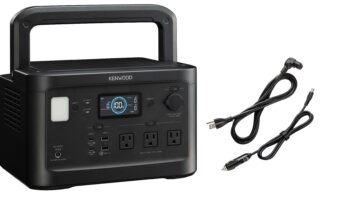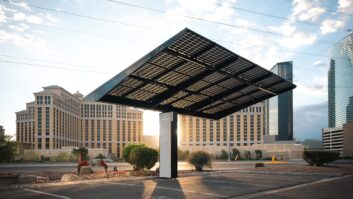NEW YORK — John Perzow is the market development VP for the Wireless Power Consortium (WPC), the only paid employee of the industry standards group behind the Qi wireless power spec. TWICE recently sat down with Perzow to discuss new developments in the nascent industry, what the future may hold for wireless power, and whether the current format battle between the WPC and the Alliance For Wireless Power (A4WP) and Power Matters Alliance (PMA), now united behind the Rezence spec, will ever be resolved.
TWICE: What’s new with the WPC?
Perzow: A lot of incremental things; there is a lot of deployment and infrastructure going around. Verizon just deployed Qi charging in five U.S. airports. There will be some car announcements forthcoming. [The automakers] get it because you put a phone in a car and the car is smarter: hands-free talk, voice recognition for commands, touchscreen control of in-car systems, and your phone doesn’t die as you use all these features.
Also: hotels. Qi charging will be rolling out to some hotel chains. Announcements will be coming along later this summer. Pretty exciting stuff. It’s happening because there is need.
TWICE: The biggest criticism I hear, and I don’t necessarily feel this way, but what I hear is, “Well I’m not plugging in my phone but I’m plugging in my pad. It’s not portable enough. I shouldn’t have to place my phone anywhere specific. Why can’t it be like Wi-Fi?”
Perzow: Yeah. I know that’s in the future. This is how technologies come about. Baby steps, especially the way this industry works, especially when you’re dealing with standard groups.
TWICE: We’ve talked to the A4WP and met with Powermat/Rezence over the years. We’ve seen some demonstrations of other emerging technologies that power devices over a distance. So where is this all leading? Is there going to be one main wireless power standard or not?
Perzow: The WPC is an organization made up of a bunch of engineers. It is a true industry standards group, as opposed to the other groups out there who just want their technology adopted to make profits. For us, it’s not about royalty; it’s about products and a good standard. That’s what our engineers do.
We have these technical committees and they bring things to them like “we need more distance, we need more XY flexibility, we need less heat, we need a safe user ID that will not allow anybody to hack the phone.” Things like “we need higher power, we need to go to notebooks, we need power blenders in our kitchen, whatever it is.” The engineers are very capable and they go off and work on it. They all bring their ideas to the table and they all use scientific process to determine what works and what doesn’t. That’s how it works. They’re organized to do that and are open because they’re motivated to create a good spec. That is the DNA of the WPC; that’s who we are. I’m the only paid guy in the organization — the rest are technologists.
The best spec isn’t always what wins. My job is to end this battle. I’m the only one doing that. The other groups? They’ve got literally dozens of people working on making profits. Actually they want to win the battle. We want to end the battle. We’re OK with a merger. We’re OK with whatever it takes that really keeps the technology cheap, makes it easy and brings value.
TWICE: Most people who see wireless power technology demonstrated immediately see the value in it but yet consumer adoption has been slow. How do you change that?
Perzow: Consumers don’t get a choice when it comes to standards. The politics and the money behind it generally drive new technologies, and consumers are kind of in the back of the bus. They want it to be transparent. Putting it in hotels and coffee houses and airports and trains and automobiles especially, that’s going to be the barrier that once that’s crossed where it’s just seamless — where I walk from my car and I go into my house, and I have a charging surface here and I have a charging surface there. If I go to my office, same type of deal.”
You need a standard where you don’t have to worry about compatibility … like Wi-Fi.
TWICE: When Wi-Fi came out, the first time I got a router, it took me two days and four phone calls to Comcast to figure out how the hell to get it to work. It was complicated. Now it’s not that hard anymore. You plug it in. You have got to get over that adoption curve and just make it out of the box instantaneous.
Perzow: I couldn’t agree more. What you just described about Wi-Fi … the standard was fixed but even in the early days it was quirky, difficult, and not for everyone. I’d say we’re just getting over that point now with this stuff.
TWICE: What technical issues do you think still need to be solved?
Perzow: The technology will be even more useful when device placement is irrelevant, but there are problems with resonant technology. For instance, the A4WP has this idea where you put a power source in the corner of the room and they have these resonator coils that are placed around that retransmit power to your device. That technology looks kind of cool. Neat idea. But, in my opinion, there are a number of solid technical reasons why that’s not a good idea. The first one is the reality it’s just incredibly inefficient. If you want 5 watts to charge a phone, you have to start with 100 watts. Round numbers — but it’s in that order. Where is the rest of the energy going? Magnetic energy that is un-utilized. It’s irresponsible. It’s just socially irresponsible. We can’t do that. The fact is if you transmit electromagnetic energy, distance is adversely proportional to efficiency. The farther it is, the worse it is.
In fact, there are no resonance systems that are standard in the market today. A4WP demonstrates why; it’s still working out the bugs. It’s around 45 percent, maybe 50 percent efficient at about 25 to 30mm. That sucks. But if you’re charging small things like a hearing aid, 50 percent of a small amount of power is still a pretty small amount of power so it’s OK. It adds real value.
I’m not here to slam A4WP — good stuff, valuable needed stuff, — but it has a way to go to be efficient. A good standard should be whatever is valuable and a good standards organization should be able to capture and be open to what’s very valuable. It will land on that point.
TWICE: What’s next?
We’ll see dual-mode receivers in the near term, that can charge using more than one standard. As far as I’m concerned that’s fine. It will increase the awareness of wireless charging.
The hotel industry, and other industries, like stadiums, restaurants, movie theatres, that’s the near future. They all have a problem that they’d like to solve. On a hotel nightstand, you want your phone to maybe dim and be quiet, or you’d like to stream your pictures or video to the TV in the room. You can do all that with Qi. The hotel can talk to the guest, like, “Hey, welcome back. Would you like to check your bill or order room service? Here is a free glass of wine because you have been here twice in the last month.” That’s all happening now with Qi.
In a restaurant, you probably want to silence your phone while charging. At a movie theater, you probable want to disable the wireless aspects of it, dim the screen using NFC. Within each of those venues, you will see more and more features enabled when you put your phone down to charge.
You will also see us demonstrate a resonant spec. We’ll probably have it ready first quarter of next year. Communication protocols are being developed. Resonance, high power is being developed: 5 watt to 8 watt to 15 watt to 2,500 watts. Plenty of good things to look forward to.












